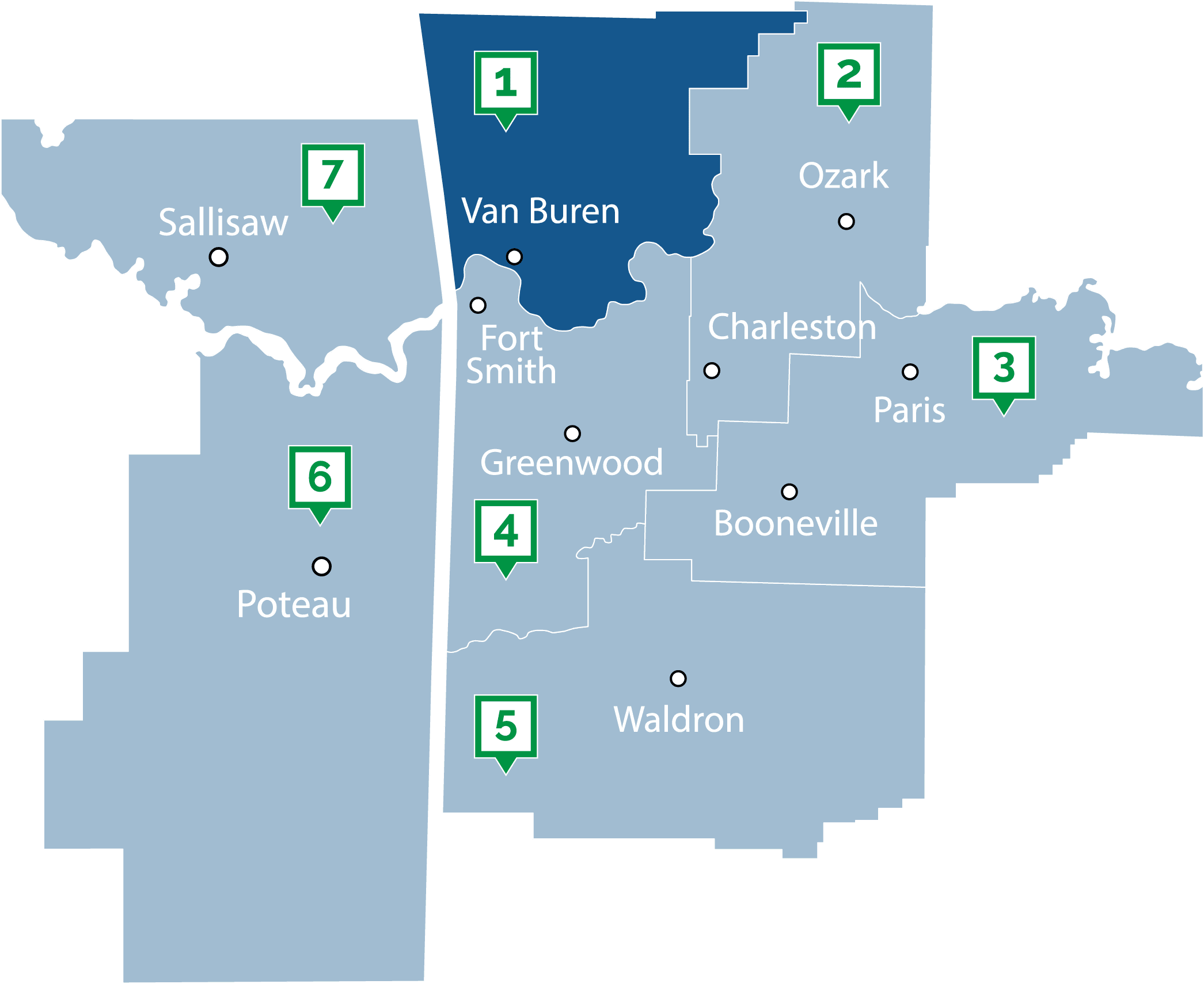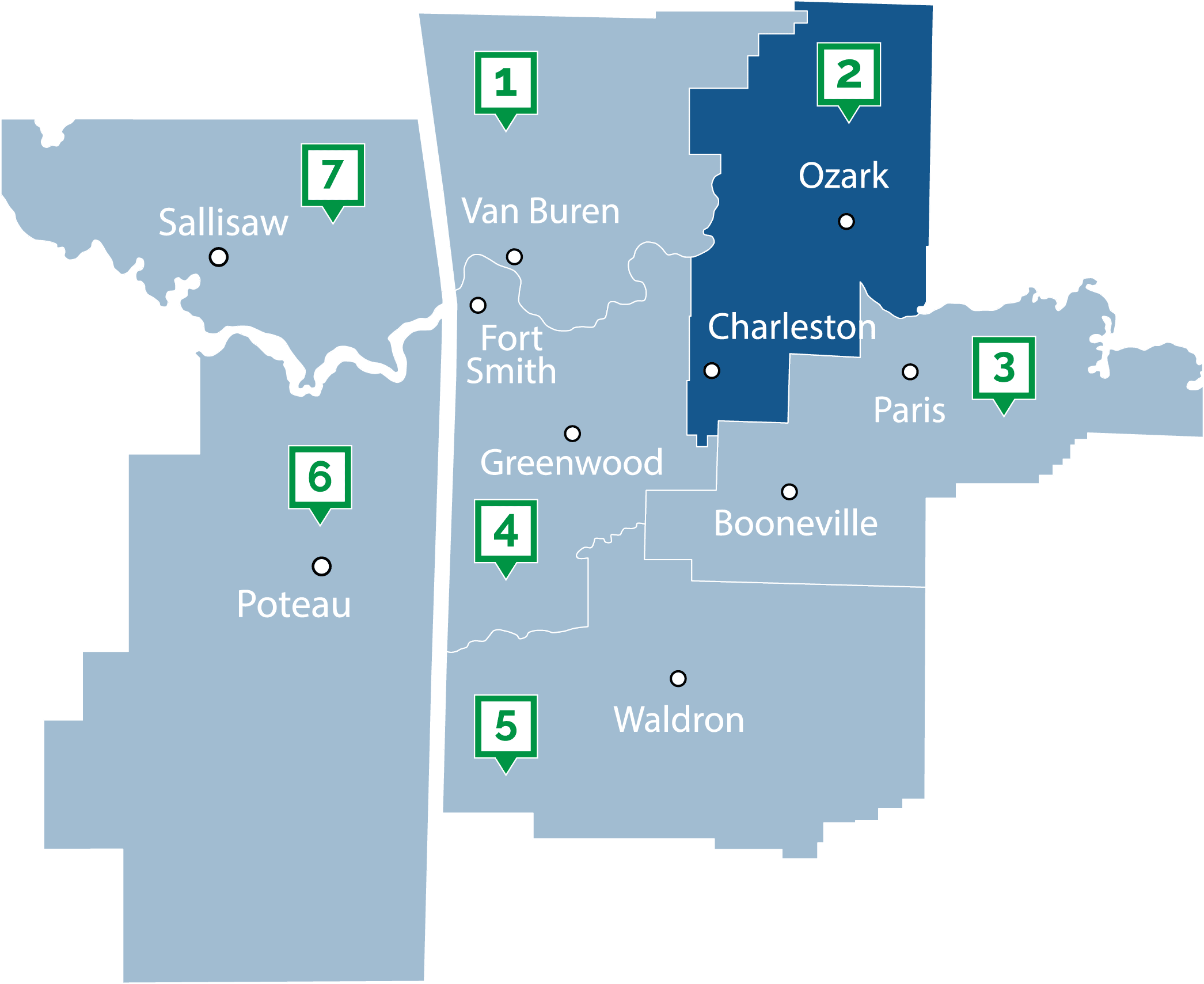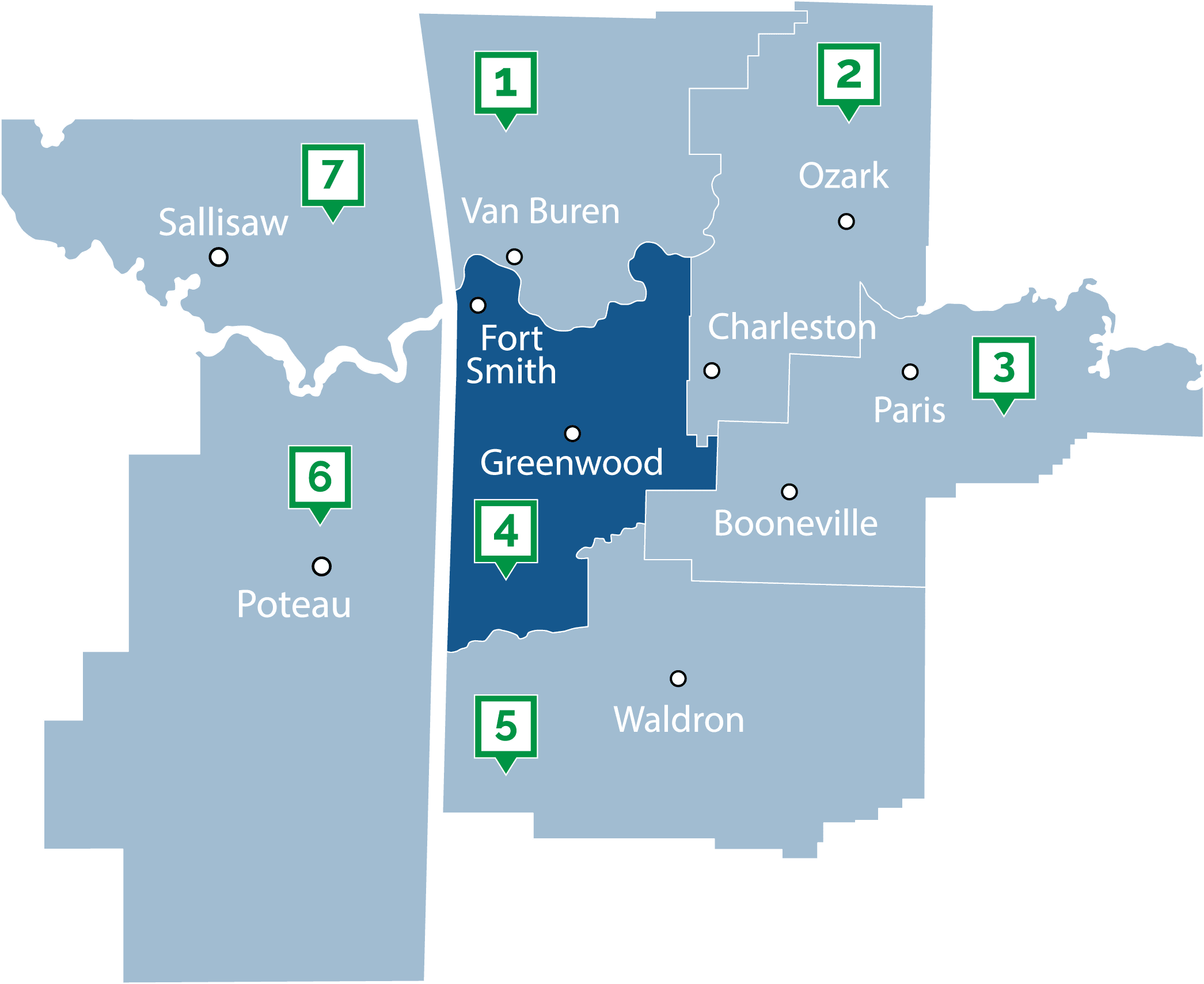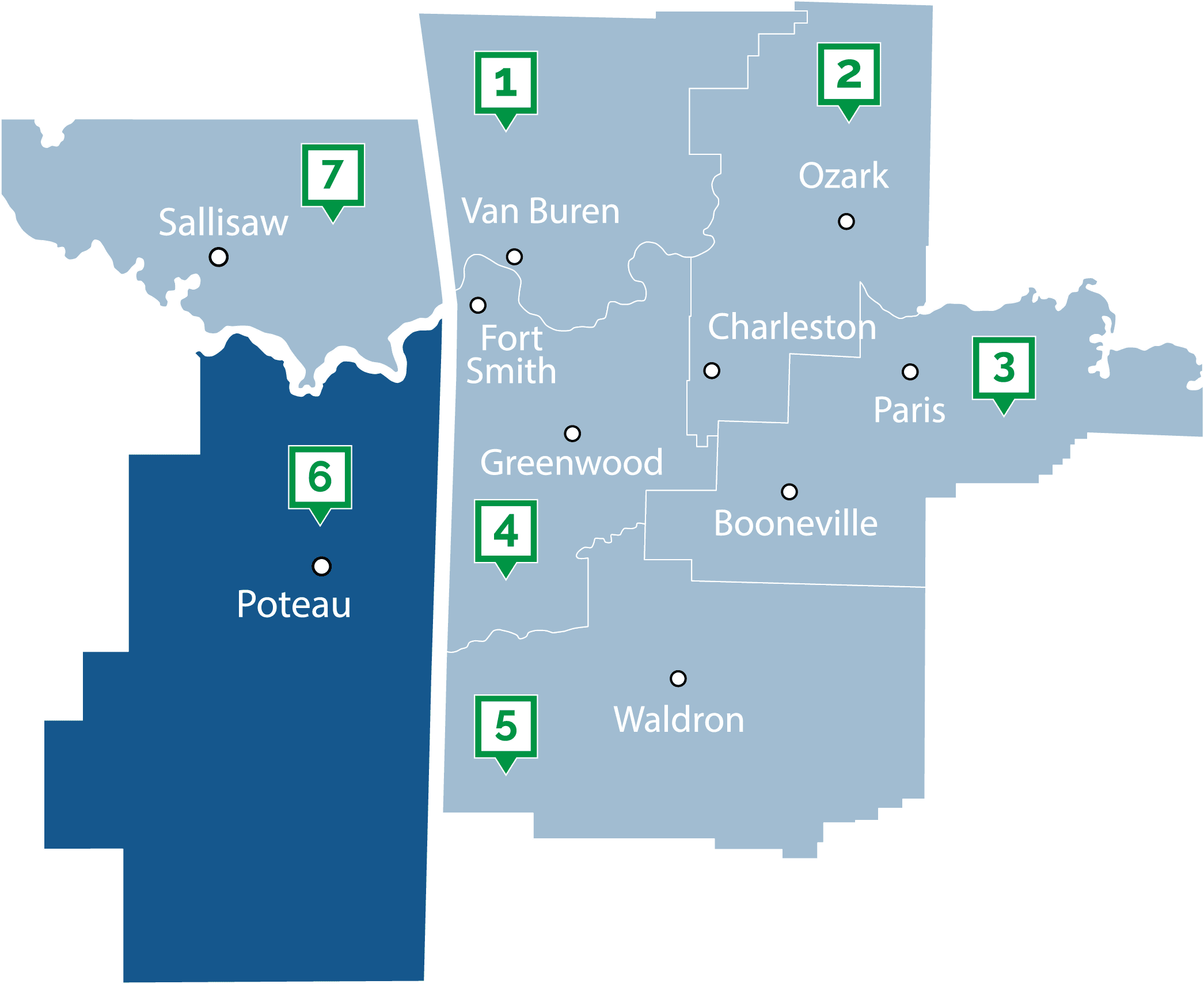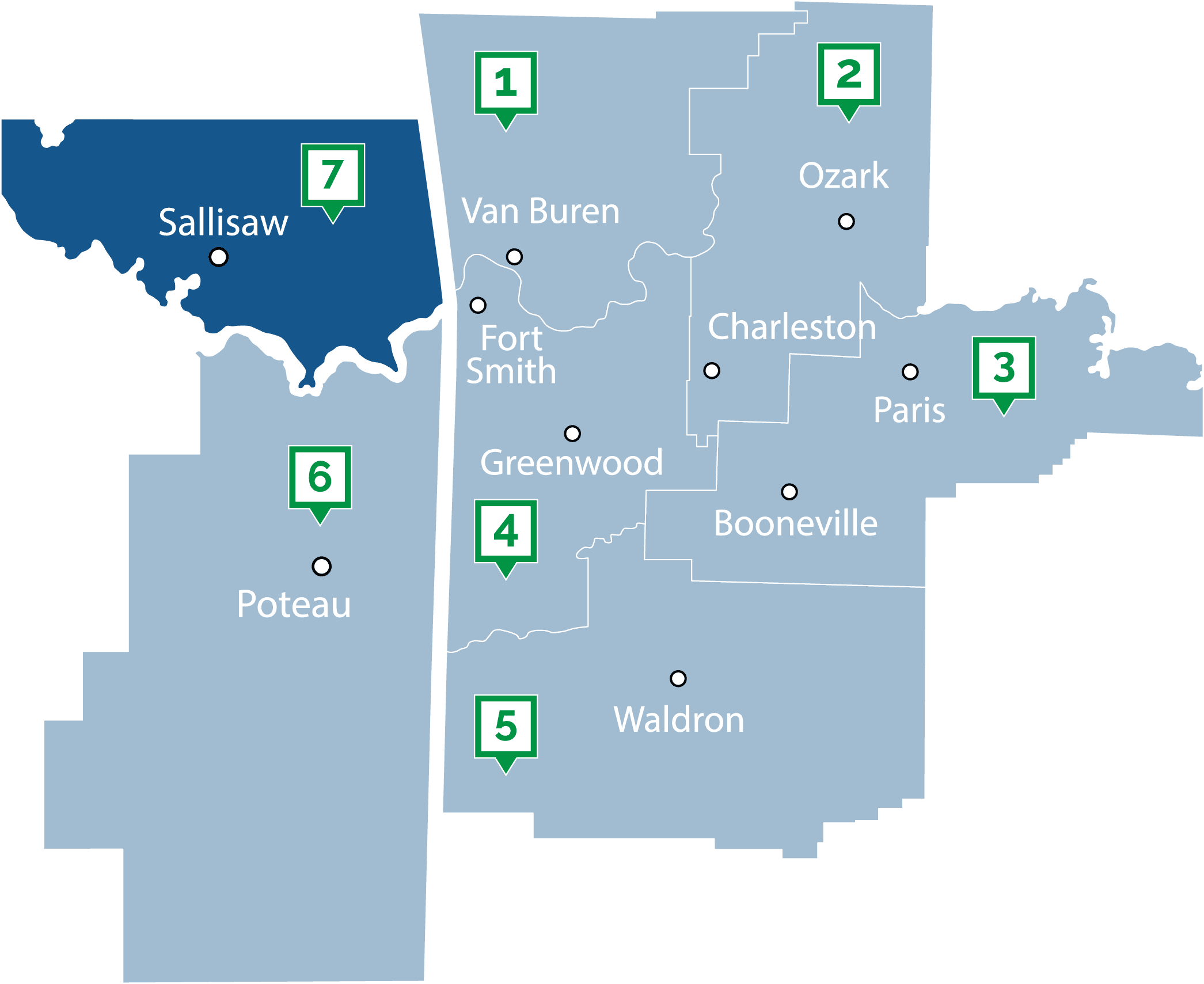Located in the
heart of the country
Together, we span two states,
but we work together, as one alliance.
Comprised of cities and towns within a 50-mile radius of Fort Smith, FSRA has members in seven counties.
ARKANSAS click County on our map for more info!
OKLAHOMA click County on our map for more info!
Crawford County
Crawford County’s ideal geographic location has long contributed to its commercial growth. Its western edge comprises the state border, with the Arkansas River marking its southern boundary. These factors, along with its intersections of major interstates and access to multiple rail carriers, make it a major transportation hub and ideal for companies seeking to transport goods domestically and globally. Thriving cities such as Alma, Mulberry, and Van Buren support a wide variety of industries, including agriculture, food processing, manufacturing, and tourism. The county also has an abundance of outdoor trails and lakes, as well as cultural gems such as its historic downtowns, art galleries, and performance venues.
Franklin County
Franklin County showcases the beautifully diverse landscapes for which “The Natural State” is known. Its terrain includes rolling hills and mountains to picturesque riverbanks and widespread farmland. The area also has deep historical roots, many which pertain to its thriving viniculture industry. Numerous vineyards and wineries operate throughout the county, making it a popular tourist destination. The county is also home to several manufacturers and has thriving educational institutions and school districts. Cities such as Altus, Charleston, and Ozark have diverse businesses that comprise their economic base and provide a wide variety of employment opportunities for residents.
Logan County
Sebastian County
Sebastian County has long-served as one of Arkansas’ most economically diverse counties. Industries include manufacturing, energy, logistics, healthcare, technology, and more. The many companies and cutting-edge educational institutions located within its cities work closely to promote growth and meet workforce demands. Sebastian County’s western edge sits on the state line and the Arkansas River provides vast shipping and transportation opportunities for surrounding corporations and communities. Fort Smith is the state’s third largest city. Popular suburbs such as Lavaca and thriving developments at Chaffee Crossing have experienced tremendous growth in recent years. The town of Greenwood draws families from throughout the region to its top-ranked school district. Sites such as the United States Marshals Museum showcase the area’s rich history, while acclaimed festivals attract artists and musicians from around the globe to the River Valley.
Scott County
Scott County is known for its beautiful landscapes, historic charm, and vast natural resources. Waldron serves as the county seat. Timber and forestry comprise a significant portion of the county’s overall economy, along with agriculture and tourism. Three lakes — Lake Hinkle, Lake Waldron, and Square Rock Lake — offer a wealth of recreational activities for residents and visitors, including fishing, swimming, and camping. The area also hosts a number of festivals and musical events throughout the year, drawing entertainment and visitors from throughout the region.
Major Employers:
LeFlore County
LeFlore County’s rich history and geographical location play an important role in the area’s economy and way of life. Beautiful scenery is woven throughout the region. The mountainous terrain and bordering river have contributed to thriving energy and shipping industries. Healthcare, manufacturing, and retail trade are also prominent fields. Cities such as Poteau boast quality schools, award-winning festivals, and distinct downtown districts. Native American culture is evident throughout many communities and plays an integral part in tourism, recreation, and the workforce. Respected educational institutions also help drive progress with programs specializing in technology and trade skills.
Sequoyah County
Situated on Oklahoma’s easternmost border, Sequoyah County’s vibrant heritage is matched only by its breathtaking landscapes. The county’s northern edge is on the Ozark Plateau, while the Ouachita Mountains and Arkansas River form the southern boundary. Popular lakes such as Tenkiller and Kerr help drive regional tourism and recreation. Its geographic features help support a variety of agriculture, including crops and cattle. Native Americans account for nearly one-fifth of the population and tribal culture is reflected in everything from education to enterprise. The county’s namesake, Sequoyah, is one of Oklahoma’s most legendary figures and his homestead annually draws thousands of visitors. In addition to tourism, cities such as Roland and Sallisaw serve as major commercial centers for Eastern Oklahoma.
